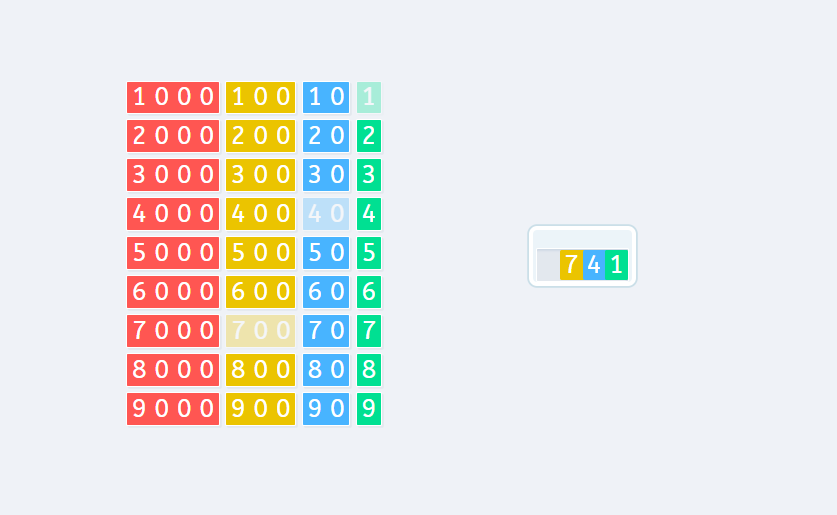May02
Activities to improve dyscalculia
Dyscalculia is a specific learning disorder that affects the acquisition of knowledge about numbers and numeracy. The best way to help improve dyscalculia is to provide children with activities that fit their profile, as each child may have problems in different areas of mathematics.

Exercises to Improve Dyscalculia
We are going to see some types of exercises that can be included in an intervention program to work on difficulties in basic numerical skills in children and improve dyscalculia.
For each of these types of exercises, it is important to adapt the activity to the child’s level of ability, to avoid potential frustrations with the mathematical tasks and to respect the child’s time.
Subitizing
Subitizing is the automatic and immediate recognition of small sets of elements, without the need for counting.
The ability to automatically display small quantities:
- Promotes operational fluency.
- Facilitates the ability to add and subtract mentally
- Helps to detect relationships between numbers, for example, realising that 10 is twice 5.
To help improve subitizing skills we can show them for a few seconds a card with a few elements and the child has to recognise at a glance the cardinal of these small sets without counting.

Place Value of Numbers
The positional value is the value that a digit takes according to the position it occupies within the number (units, tens, hundreds…). Therefore, changing the position of a digit within a number alters the total value of the number.
The fact that the same number, for example 5, can represent 5 items but can also represent fifty, five hundred or five thousand based on where it is positioned can be a complicated concept for children with dyscalculia.
Reading and writing numbers with Montessori Flash Cards enables children to understand the place value of numbers. In fact, these coloured cards are a good visual tool to introduce the concept of the decimal system starting with the units (from 1 to 9) in green, then the tens (from 10 to 90) in blue, the hundreds (from 100 to 900) in yellow and finally the thousands (from 1000 to 9000) in red.

Vertical operations
Understanding operations is fundamental to the study of mathematics. For students with dyscalculia, understanding the processes underlying vertical operations can be one of the main obstacles to the acquisition of basic mathematical skills.
Doing addition and subtraction exercises using the base 10 blocks is essential for children to be able to visualise the procedures. Being able to visually represent the numbers used in the calculation and to apply the procedures by handling the objects, favours a deeper understanding rather than a mere memorisation of procedures.
Video tutorial of Vertical Subtraction (Carrying the Number)
On Smartick’s YouTube channel, there are multiple tutorials for learning vertical operations. The video below focuses on vertical subtraction involving carrying the numbers using base 10 blocks.
Problem Solving
Now let’s see how we can improve dyscalculia by helping with mathematical problem-solving.
Mathematical problems are complex tasks that require the involvement of different cognitive and metacognitive skills. The ability to create a mental representation of the problem is a fundamental skill that goes beyond the semantic understanding of the text provided, integrating all the elements of the problem.
The ability to visually represent the problem is indicative of comprehension and, therefore, of better performance in tasks of this type. To help children in this regard, we can do modelling exercises with manipulative materials such as counters, strips or poly cubes. In the National Library of Virtual Manipulatives, there are many free tools that we can use to work on the representation of mathematical problems with children with dyscalculia.
We hope that these activities will help to improve your child’s dyscalculia. If you have any doubts about your child’s risk of dyscalculia, we recommend that you see a specialist to help you assess and, if necessary, treat it. Early identification and attention helps to reduce difficulties.
- Dyscalculia Exercises in PDF to Work on Place Value - 28 de September de 2023
- Activities to Work On Dyscalculia: Board Games - 5 de May de 2023
- Dyscalculia Treatment: LEGO building blocks - 19 de April de 2023

